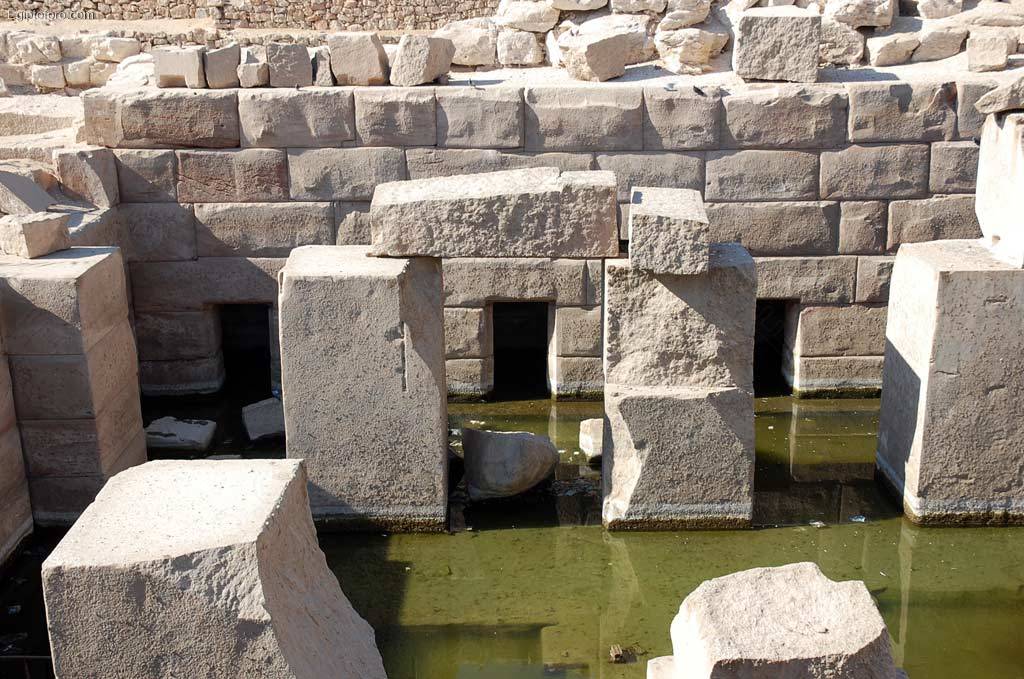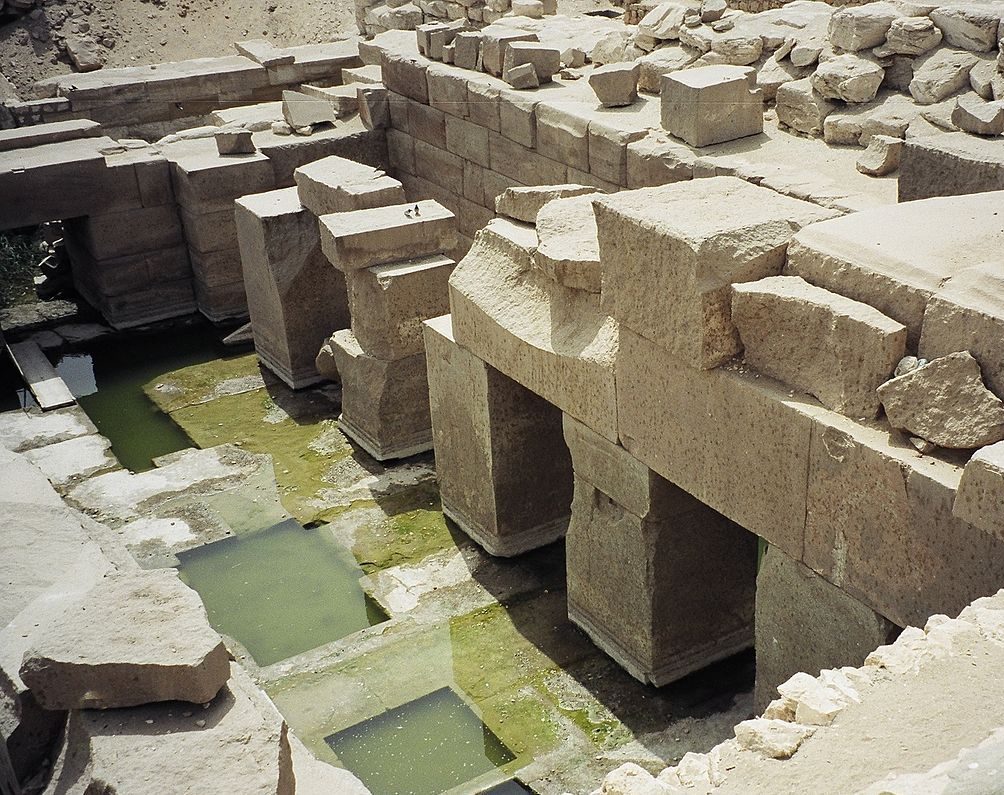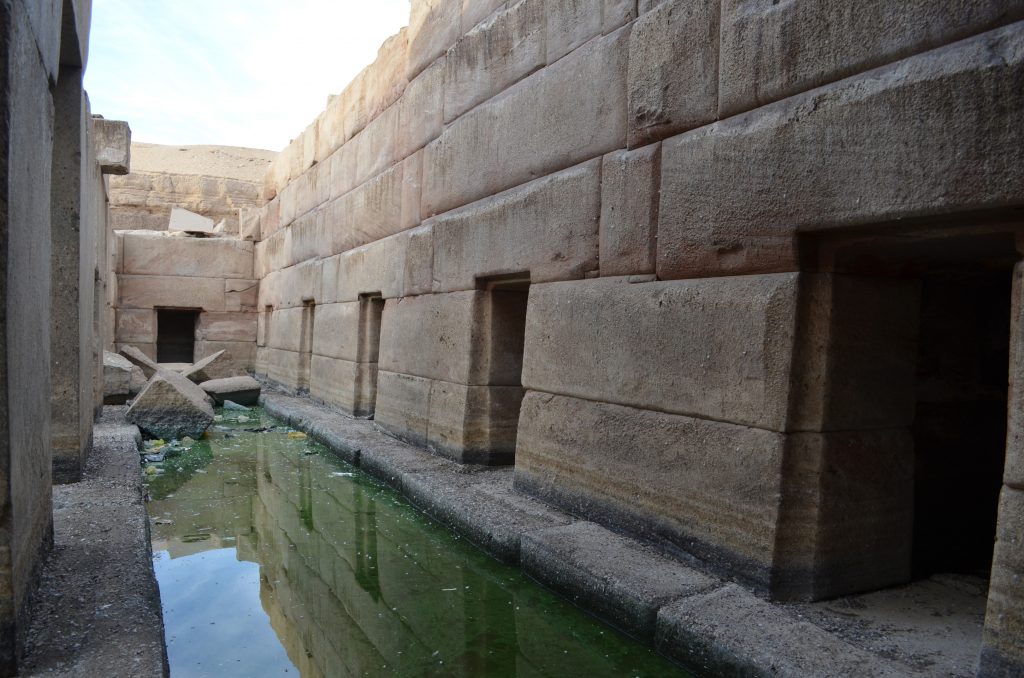The Osireion: The Oldest Temple In Egypt

The Osireion: Egypt’s Mysterious Antediluvian Megalithic Temple
The Osireion is an enigmatic ancient Egyptian temple located in Abydos, behind the temple of Seti I. It might be the oldest megalithic temple in all of Egypt, though this claim is often debated by modern Egyptologists.
Discovered by renowned archaeologists Flinders Petrie and Margaret Murray during their excavations in 1902/1903, the Osireion was built at a significantly lower level than the foundations of Seti I’s temple, who reigned from 1294–1279 BCE. While mainstream Egyptology confidently dates the Osireion to Seti’s reign, this theory is largely based on its proximity to Seti’s temple rather than concrete evidence.
Strabo, the Greek geographer who visited the Osireion in the first century BCE, was astonished by its grandeur:
“Above this city lies Abydos, where is the Memnonium, a royal building, which is a remarkable structure built of solid stone, and of the same workmanship as that which I ascribed to the Labyrinth, though not multiplex; and also a fountain which lies at a great depth so that one descends to it down vaulted galleries made of monoliths of surprising size and workmanship.”
Originally, the Osireion was covered with a roof of lintels weighing up to 200 tons, meticulously placed atop the columns. The craftsmanship is awe-inspiring, with monoliths that are heavier and more precisely placed than any other structure in Egypt. The magnitude and engineering of the Osireion far exceed that of Seti’s temple, despite mainstream archaeology’s assertion that they were built in the same period.
Several observations suggest an earlier date of construction for the Osireion, potentially making it the oldest temple and megalithic structure in all of Egypt, alongside the Sphinx, the Valley Temple, and the three main pyramids. A prevailing hypothesis is that Seti I built his monument atop the Osireion to honor and preserve this ancient structure, believed to be the tomb of Osiris himself.
One of the most striking features of the Osireion is its lower level compared to the rest of the complex, coupled with the complete absence of inscriptions. This is highly unusual, as the funerary monuments of the Dynastic Egyptians are typically adorned with dense inscriptions and mythological accounts, with Seti I’s temple being no exception. Why, then, did the builders leave such a significant structure like the tomb of Osiris entirely bare?
The Osireion was constructed with perfect symmetry and precision, unparalleled in ancient Egypt except for the three main pyramids and the Valley Temple. The megaliths forming the walls are fitted together so precisely, without mortar, that a sheet of paper cannot fit between them. Additionally, these stones feature the distinctive “knobs” found at other megalithic sites around the world, from South America to Japan.
The Osireion remains one of Egypt’s most mysterious and captivating structures, shrouded in the mysteries of its antediluvian past and unmatched in its megalithic grandeur.


Among the hypotheses that suggest an earlier date of construction for the Osireion, some geologists have identified unmistakable signs of rain erosion on its massive blocks. These erosive marks indicate exposure to significant rainfall, which could only have occurred abundantly between 12,000 and 10,000 BCE. This dating would make the Osireion not only contemporary with but potentially even older than Göbekli Tepe in Turkey, which has long been regarded as the oldest archaeological site in the world.
In the Annual Report from the Smithsonian Institute, 1914, pp. 579-585, we can read the notes of E.Naville, who studied the structure:
Excavations at Abydoss: Naville, Edouard. (Extract)
“There is no longer any doubt, then, that we have discovered what Strabo calls the well or the fountain of Abydos. He spoke of it as being near the temple, at a great depth, and remarkable for some corridors whose ceilings were formed of enormous monolithic blocks. That is exactly what we have found.
These cells were 17 in number, 6 on each of the long sides. There was one in the middle of the wall at the back; in passing through it one came in the rear to the large hall which was the tomb of Osiris. A careful study of the sculptures confirmed the opinion that this was a funeral hall where the remains of the god were expected to be found. but this hall did not form part of the original edifice. It must have been constructed underground when Seti I built the temple of the god. The tomb of Osiris was very near the great reservoir. Nothing revealed its presence; the entrance to it was exactly like that to all the other cells, the back of it being walled up after they had dug through it…
…We have as yet no certain indications of the date of the construction; but the style, the size of the materials, the complete absence of all ornamentation, all indicate very great antiquity. Up to the present time what is called the temple of the Sphinx at Gizeh has always been considered one of the most ancient edifices of Egypt. It is contemporaneous with the pyramid of Chefren.
The reservoir of Abydos being of a similar composition, but of much larger materials, is of a still more archaic character, and I would not be surprised if this were the most ancient structure in Egypt”.
